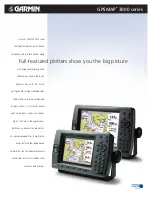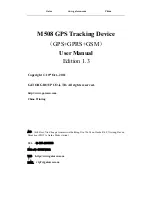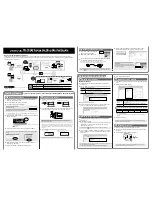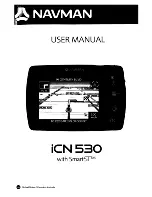
Revision G
October 14, 1996
3
SECTION II
2.
OPERATION
2.1.
DESCRIPTION
The TRI NAV is an Electronic Course Deviation Indicator (ECDI) that presents VOR and
ILS navigation information in a dynamic display. The ECDI is unique and very easy to use.
It gives vivid and dynamic presentation of deviation from VOR, localizer and glide slope
course centerline. The display clearly shows the deviation from the desired flight path. You
will find the Terra by Trimble TRI NAV ECDI reads easily and appears readily in your
peripheral vision.
2.2.
OPERATION
The OBS course selector is a small knob on the lower left of the instrument. The OBS course
selector is bi-directional two speed continuous control used to set the desired course. The
slow speed rate is approximately one degree per half turn and high speed is 10 degrees per
half turn. This control has no effect on localizer operation other than to provide a reminder
of the desired course or possibly the missed approach VOR bearing.
The course display is a three digit electronic display which indicates the selected course,
bearing “TO” or radial “FROM” the VOR station. Courses from 000 to 359 may be selected
in one degree increments.
The TO/OBS/FR/BC selector switch is normally positioned in the OBS position which
allows the OBS course selector to be active. The TO position causes the course display to
automatically change to give a continuous bearing “TO” the VOR station and the course
deviation bar will not be illuminated. The FROM position causes the course display to
change automatically to indicate continuously the radial “FROM” the VOR station and the
course deviation bar will not be illuminated. During ILS operation, BC may be selected for
making a Back Course Localizer instrument landing.
The mode display is in the upper left quadrant of the display. In VOR, the mode display
indicates “T” for a bearing TO the VOR station and “F” for a radial FROM the VOR station.
When making an instrument approach where only a localizer is present, the mode display will
display an “L” for localizer. When both a glide slope and localizer are present, the mode
display will exhibit an “I” for ILS. Should a back course localizer approach be desired, the
TO/OBS/FR/BC switch shall be set to “FR/BC”, the mode will display a “b” for back course.
When invalid information or no signal is present, the mode display will display an “o” for
OFF.
The course Deviation Bar indicates deviation from the selected course. The ends of the
display bars have arrows to point direction to fly to stay on course. The more display bars
that are illuminated, left or right, up or down, the greater the deviation from course. The
deviation bar is cabable of indicating a full 10degree error left or right. There are 14 light
bars each side of center in the deviation scale; therefore, each bar represents approximately
0.7 degree deviation in the VOR mode. When exactly on course, indication will be by two
vertical bars in the VOR/LOC mode.
Summary of Contents for TRI NAV
Page 9: ...6 Revision G October 14 1996 THIS PAGE INTENTIONALLY LEFT BLANK ...
Page 10: ...Revision G October 14 1996 7 Figure 2 1 TRI NAV Display ...
Page 11: ...8 Revision G October 14 1996 THIS PAGE INTENTIONALLY LEFT BLANK ...
Page 17: ...14 Revision G October 14 1996 THIS PAGE INTENTIONALLY LEFT BLANK ...
Page 18: ...Revision G October 14 1996 15 Figure 3 1 TRI NAV TRI NAV C Jumper Wire Location ...
Page 19: ...16 Revision G October 14 1996 THIS PAGE INTENTIONALLY LEFT BLANK ...
Page 20: ...Revision G October 14 1996 17 18 Figure 3 2 Tri Nav Interconnect Diagram ...
Page 22: ...20 Revision G October 14 1996 THIS PAGE INTENTIONALLY LEFT BLANK ...
Page 23: ...Revision G October 14 1996 21 Figure 3 3 TRI NAV ADJUSTMENT ...
Page 24: ...22 Revision G October 14 1996 THIS PAGE INTENTIONALLY LEFT BLANK ...
Page 26: ...24 Revision G October 14 1996 THIS PAGE INTENTIONALLY LEFT BLANK ...






































